
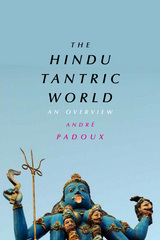
This book offers a clear, well-grounded overview of Tantra that offers substantial new insights for scholars and practitioners. André Padoux opens by detailing the history of Tantra, beginning with its origins, founding texts, and major beliefs. The second part of the book delves more deeply into key concepts relating to the tantric body, mysticism, sex, mantras, sacred geography, and iconography, while the final part considers the practice of Tantra today, both in India and in the West. The result is an authoritative account of Tantra’s history and present place in the world.
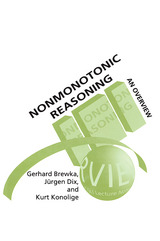

This volume heralds the appearance, for the first time in many years, of a totally new document by Sigmund Freud. It is the draft of a lost metapsychological paper, one of twelve essays written during World War I at the peak of the master's powers. Freud intended to publish all twelve in book form, under the title Preliminaries to a Metapsychology, and thereby set out the theoretical foundations of psychoanalysis. Scholars have long lamented the disappearance without a trace of seven of these important essays.
Only in 1983 did Ilse Grubrich-Simitis happen upon this draft, in Freud's handwriting, in an old trunk containing papers and documents of his Hungarian collaborator Sándor Ferenczi. With the help of a brief letter Freud had written on the back of the last page, she soon realized that the manuscript she had found was the draft of the final paper in the series. That draft is published here in facsimile, together with a transcription in German of the facsimile and the English translation.
In the first part of the draft, which is written in a kind of shorthand, Freud contrasts the three classic transference neuroses: anxiety hysteria, conversion hysteria, and obsessional neurosis. In the second part, which is written in complete sentences, Freud undertakes a daringly speculative "phylogenetic fantasy" He explores whether the debilitating illnesses of the neurotic and the psychotic today might have originated long ago as adaptive responses of the entire species to threatening environmental changes or to traumatic events in the prehistory of mankind.
In the draft "Fantasy" Freud modifies and expands the line of reasoning he began in Totem and Taboo (1912-13) after an intensely productive exchange with Ferenczi about Lamarckian concepts, making this recovered draft of major significance to students not only of psychoanalysis but also of the social sciences, humanities, and natural sciences.
Ilse Grubrich-Simitis has contributed a detailed essay, setting the overview in the context of Freud's life, his work, and his historical and scientific prominence. She quotes from relevant letters of Freud and Ferenczi, some published here for the first time.

A unique study of the Hebrew of the Dead Sea Scrolls
In Qumran Hebrew, Reymond examines the orthography, phonology, and morphology of the Dead Sea Scrolls. Short sections treat specific linguistic phenomena and present a synopsis and critique of previous research. Reymond’s approach emphasizes problems posed by scribal errors and argues that guttural letters had not all “weakened” but instead were “weak” in specific linguistic environments, texts, or dialects. Reymond illustrates that certain phonetic shifts (such as the shift of yodh > aleph and the opposite shift of aleph > yodh) occur in discernible linguistic contexts that suggest this was a real phonetic phenomenon.
Features:
- Summary and critique of previous research
- Discussion of the most recently published scrolls
- Examination of scribal errors, guttural letters, and phonetic shifts
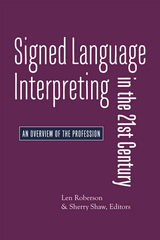
Each chapter provides students with objectives, keywords, and discussion questions. The chapters convey clear information about topics that include credentialing, disposition and aptitude for becoming an interpreter, interpreting for people who are DeafBlind, and working within specialty settings, such as legal and healthcare. A key resource for interpreter certification test preparation, this text follows the interpreter’s ethical, practical, and professional development through a career of lifelong learning and service.
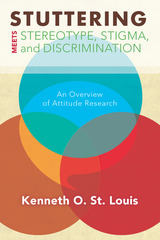
Stuttering Meets Stereotype, Stigma, and Discrimination: An Overview of Attitude Research is the only reference work to date devoted entirely to the topic of stuttering attitudes. It features comprehensive review chapters by St. Louis, Boyle and Blood, Gabel, Langevin, and Abdalla; an annotated bibliography by Hughes; and experimental studies by other seasoned and new researchers. The book leads the reader through a maze of research efforts, emerging with a clear understanding of the important issues involved and ideas of where to go next. Importantly, the evidence base for stuttering attitude research extends beyond research in this fluency disorder to such areas as mental illness, obesity, and race. Thus, although of interest primarily to those who work, interact, or otherwise deal with stuttering, the book has potential for increasing understanding, ameliorating negative attitudes, and informing research on any of a host of other stigmatized conditions.
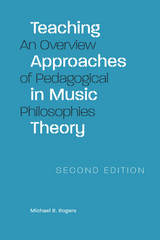
Drawing on decades of teaching experience and the collective wisdom of dozens of the most creative theorists in the country, Michael R. Rogers’s diverse survey of music theory—one of the first to comprehensively survey and evaluate the teaching styles, techniques, and materials used in theory courses—is a unique reference and research tool for teachers, theorists, secondary and postsecondary students, and for private study. This revised edition of Teaching Approaches in Music Theory: An Overview of Pedagogical Philosophies features an extensive updated bibliography encompassing the years since the volume was first published in 1984.
In a new preface to this edition, Rogers references advancements in the field over the past two decades, from the appearance of the first scholarly journal devoted entirely to aspects of music theory education to the emergence of electronic advances and devices that will provide a supporting, if not central, role in the teaching of music theory in the foreseeable future. With the updated information, the text continues to provide an excellent starting point for the study of music theory pedagogy.
Rogers has organized the book very much like a sonata. Part one, “Background,” delineates principal ideas and themes, acquaints readers with the author’s views of contemporary musical theory, and includes an orientation to an eclectic range of philosophical thinking on the subject; part two, “Thinking and Listening,” develops these ideas in the specific areas of mindtraining and analysis, including a chapter on ear training; and part three, “Achieving Teaching Success,” recapitulates main points in alternate contexts and surroundings and discusses how they can be applied to teaching and the evaluation of design and curriculum.
Teaching Approaches in Music Theory emphasizes thoughtful examination and critique of the underlying and often tacit assumptions behind textbooks, materials, and technologies. Consistently combining general methods with specific examples and both philosophical and practical reasoning, Rogers compares and contrasts pairs of concepts and teaching approaches, some mutually exclusive and some overlapping. The volume is enhanced by extensive suggested reading lists for each chapter.
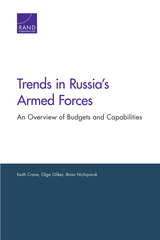
READERS
Browse our collection.
PUBLISHERS
See BiblioVault's publisher services.
STUDENT SERVICES
Files for college accessibility offices.
UChicago Accessibility Resources
home | accessibility | search | about | contact us
BiblioVault ® 2001 - 2024
The University of Chicago Press









